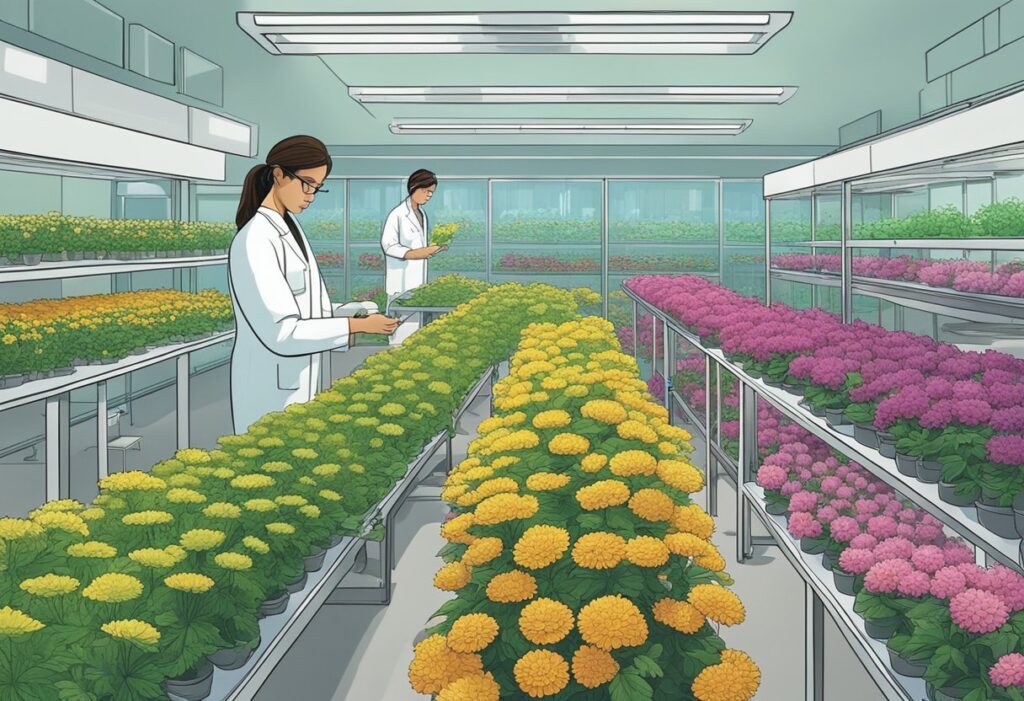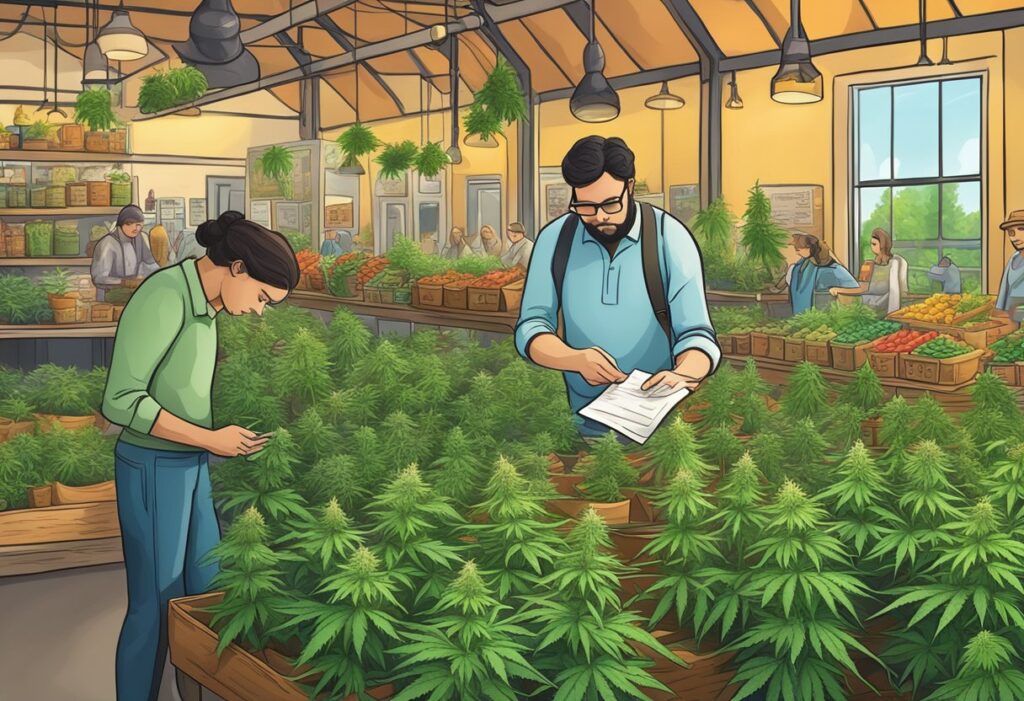
Exploring the realm of autoflowers, you’ll discover the intricacies of their genetics and how breeders manipulate these to develop strains that thrive in Canadian climates.
Your journey into autoflower seeds in Canada begins with understanding the genetic makeup of these plants. Autoflowers are unique in their combination of sativa, indica, and, most importantly, Cannabis ruderalis genetics. The ruderalis lineage is crucial as it imparts the autoflowering trait, allowing plants to flower based on age rather than light cycle changes. In Canada, breeders often work with a rich tapestry of genetic diversity, creating autoflowers that can withstand the varied climate conditions – from the humid regions of British Columbia to the cooler terrains of Vancouver.
Primary Genetic Components of Autoflowers:
Breeding practices have evolved remarkably, with Canadian breeders constantly pushing the envelope to enhance the quality of autoflowers. Humboldt Seed Company is notable for developing robust autoflower strains that compete with traditional photoperiod plants in THC content and yield. Genetic stability remains a priority; meanwhile, breeding techniques have evolved to shorten growth cycles, now ranging between 8-10 weeks, favoring a continuous harvest that’s essential in commercial operations.
Breeding Milestones:
When you consider autoflower seeds, your selection hinges on the traits you value. Whether it’s a high THC content for a powerful psychoactive experience or a higher CBD concentration for medicinal benefits without intoxication, genetic selection is pivotal. In selecting parent plants, breeders scrutinize characteristics such as growth patterns, resistance to pests, and flowering time, shaping the next generation of autoflowers to meet your precise expectations.
Traits to Consider:
Through understanding the genetics and breeding of Canadian autoflowers, you are better equipped to appreciate the diverse cannabis landscape that the nation offers.

When cultivating autoflower seeds in Canada, it’s crucial to understand the specific needs of these plants to maximize their potential. Here’s how you can optimize their environment and manage the grow cycle efficiently, while conserving energy and resources.
Indoor Cultivation
Outdoor Cultivation
By carefully managing these elements, you can create a thriving environment for your autoflower seed in Canada.

In Canada, the cannabis industry is blossoming with advancements in autoflower genetics shaping the cultivation landscape. Your understanding of the commercial viability and legal framework of autoflowers is crucial to navigating the market.
Commercial growers in Canada are adapting to the demand for autoflower strains due to their shortened life cycle and ability to produce consistent THC levels. The high-grade autoflower seed in Canada is increasingly coveted for both commercial and home cultivation. While commercial operations focus on high yields and uniform crop batches, home growers appreciate the ease of growing these varieties in backyard pots or garden beds, with low-stakes inputs.
As a Canadian consumer, you’ll find that dispensaries are stocking up on a variety of autoflower strains. These offer competitive THC levels and an array of hybrid strains, making them as enticing as regular cannabis strains. Seed selection is broad, providing you with customizable options whether you opt for a fruity profile or prefer a high THC yield.
Navigating the law is key to successfully engaging with the cannabis market in Canada. For commercial growers and dispensary owners, staying informed about licensing and cultivation regulations is paramount. For homegrowers, understanding your rights to grow certain amounts of plants at home is essential. Canada’s legal framework aims to balance control with accessibility, reflecting both the demand for and the acceptance of cannabis in society.
Autoflowers are revolutionizing cannabis cultivation with their unique set of genetics. This FAQ digs into the particulars of autoflower genetics that are influencing the Canadian market.
When you’re looking for the best autoflower seeds in Canada, consider the feminization rate and customer feedback. Renowned Canadian seed banks often boast about near-perfect feminization rates, typically above 99.9%, indicating a high probability of female plants from their seeds.
High-yielding autoflowers generally possess genetics that optimize light absorption and have a robust root system. These plants tend to have short intervals between nodes, resulting in dense and heavy flowering, effectively increasing the yield.
Some autoflower varieties can complete their growth cycle in as little as 8 weeks from seed to harvest. The quickest ones are often bred for speedy development without sacrificing the quality of the cannabis.
The genetic makeup of autoflowers allows them to switch from vegetative growth to flowering without the need for specific light cycles. This trait adds to their ability to grow and mature faster. Moreover, breeders work to increase THC and CBD levels through selective breeding, which enhances potency.
In Canada’s varying climate, you’ll find autoflower strains that are engineered to be resilient and adaptable. Strains that can endure the cooler, shorter grow season, and still deliver quality yield are often regarded as top-performers in Canadian environments.
We ship and deliver world wide via USPS and various couriers.
We offer a wide range of secure and anonymous online payment options.
We care about you, our customer. Please contact us with any questions or concerns.
Find out more about the benefits of being a loyal and regular customer.
WE ARE EVERY GROWERS ONE STOP SHOP TO ACQUIRE PREMIUM CANNABIS SEEDS FOR SALE IN THE USA, CANADA AND AUSTRALIA

Farmers Lab Seeds 2024, | All Right Reserved
Seeds are sold as novelty items, souvenirs, and collectibles. They contain 0% THC. We encourage our customers to check the legislation in their Country, State, Province, and Municipality prior to purchasing items from our store. We do not provide growing information.
All seeds are sold as hemp, and lab tested under 0.3% THC. This product is not for use by or sale to persons under the age of 21. This product should be used only as directed on the label. It should not be used if you are pregnant or nursing. Consult with a physician before use if you have a serious medical condition or use prescription medications. A Doctor’s advice should be sought before using this and any supplemental dietary product. All trademarks and copyrights are property of their respective owners and are not affiliated with nor do they endorse this product.
These statements have not been evaluated by the FDA. This product is not intended to diagnose, treat, cure or prevent any disease. Individual weight loss results will vary. By using this site, you agree to follow the Privacy Policy and all Terms & Conditions printed on this site. Void Where Prohibited by Law.